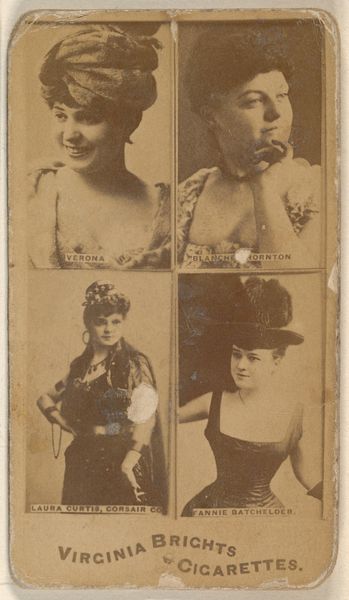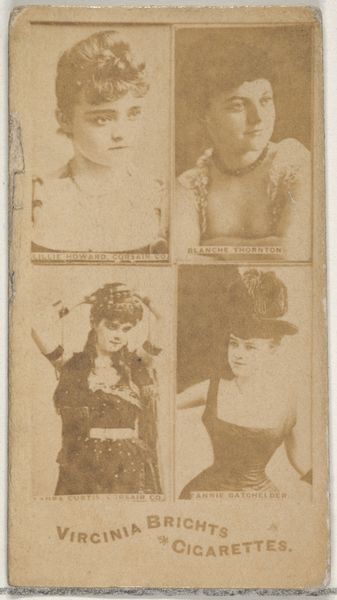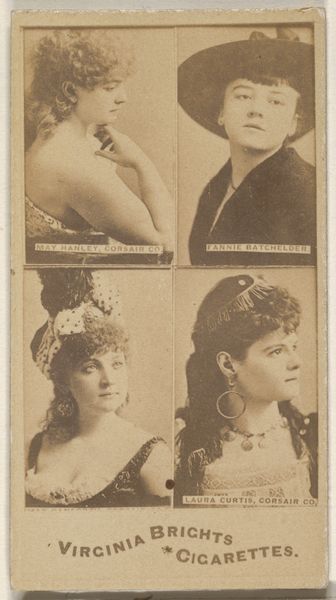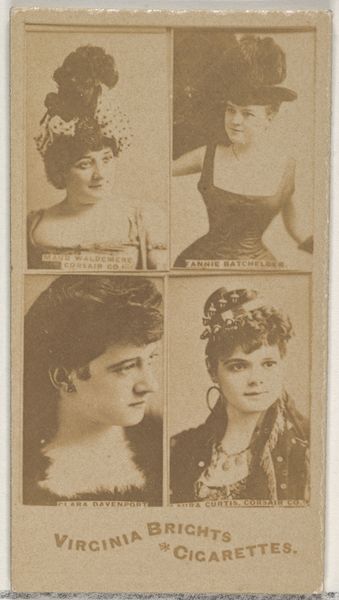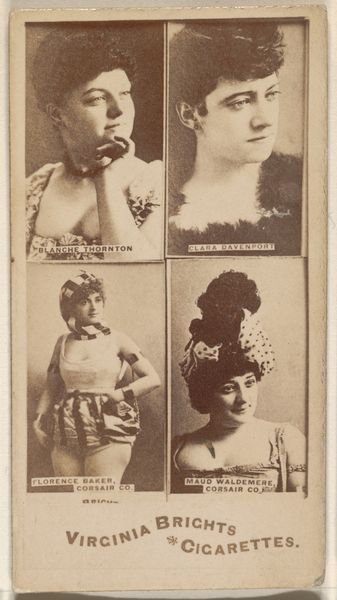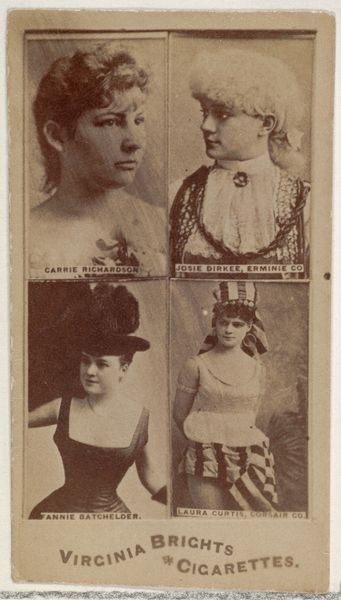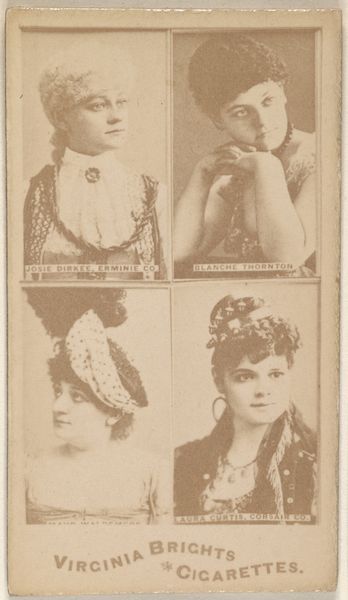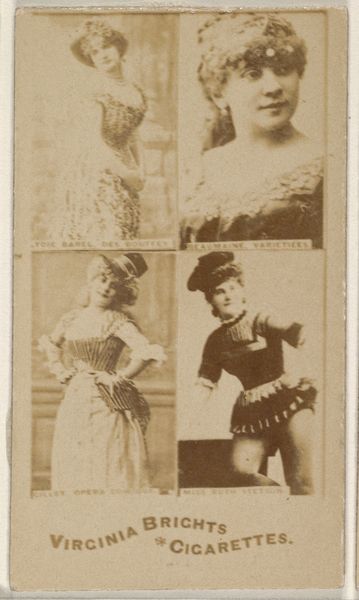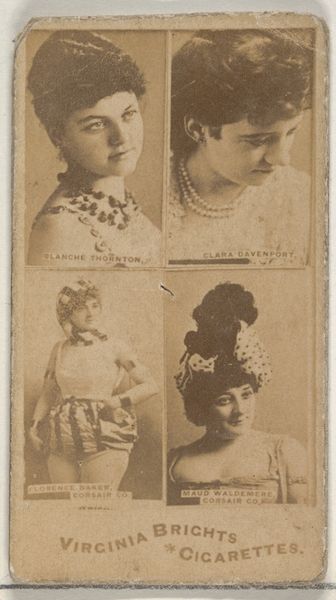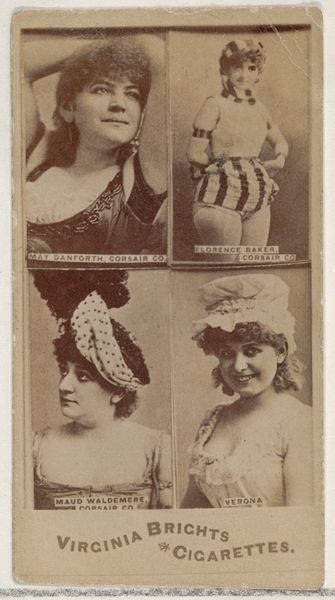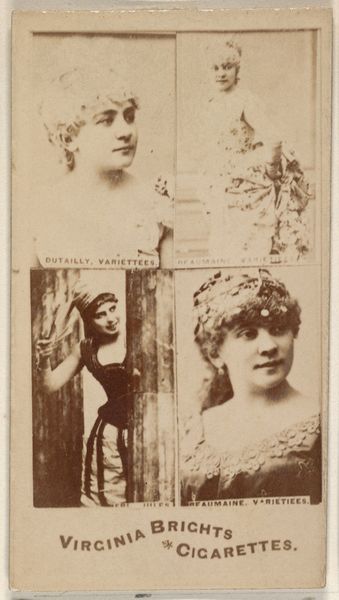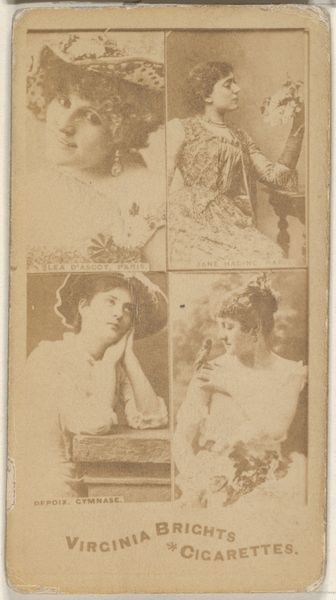
Blanche Thornton/ Verona, from the Actors and Actresses series (N45, Type 4) for Virginia Brights Cigarettes 1885 - 1891
0:00
0:00
drawing, lithograph, print, photography
#
portrait
#
drawing
#
lithograph
# print
#
photography
Dimensions: Sheet: 2 3/4 x 1 3/8 in. (7 x 3.5 cm)
Copyright: Public Domain
Curator: Well, here we have "Blanche Thornton/ Verona, from the Actors and Actresses series (N45, Type 4) for Virginia Brights Cigarettes." It was created between 1885 and 1891. It’s currently held at the Metropolitan Museum of Art. What do you think of it? Editor: It’s evocative... dreamy, almost. The soft lithograph, divided into quadrants, feels like flipping through old, sepia-toned memories. Is it me, or do these portraits whisper stories of a bygone era? Curator: These types of cards were made using drawing, lithography, printmaking, and photography all integrated into one mass-produced consumer good, intended to stiffen cigarette packs and entice customers with idealized images of female performers. Editor: Actors and actresses, you say? Oh, the drama! The romance! I see four unique acts, frozen mid-performance. One touches her face shyly; another smiles sweetly; then there's the elegant one with the feathery hat. The final actress... perhaps a fiery dancer with a cascade of sequins? Curator: Right. The cards created by Allen & Ginter are representative of how popular imagery reinforced social hierarchies. The commodification of images—like these of popular actresses—became accessible across different socio-economic strata of American society. This specific one shows two portraits featuring "Blanche Thornton" and "Verona." Editor: I imagine some folks saved them and admired them as art objects, traded them, or studied their fashion… Each little frame brims with feminine mystique, advertising tobacco. There's a tension here, you know? A juxtaposition. It makes me feel melancholic for times I've never even known, imagining these actresses performing live for an audience who’s also taking it all in, present in their material world, cigarette smoke and all. Curator: It’s a small yet telling window into the intertwined industries of entertainment, advertising, and mass manufacturing in the late 19th century. The integration of lithography speaks volumes about industrial advancements, changing labor practices, and their effect on everyday life at this time. Editor: Absolutely, and through all that history, still this whisper of artistic intention, you know? Even a mass-produced item can capture something authentic about its subjects—and viewers. It leaves me pondering the very act of looking, seeing, remembering… Curator: Well, thanks for looking, and sharing that with me. Editor: Anytime.
Comments
No comments
Be the first to comment and join the conversation on the ultimate creative platform.
